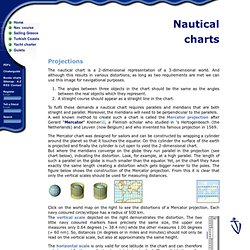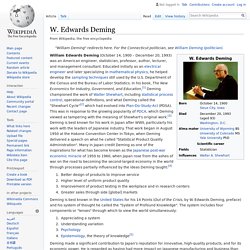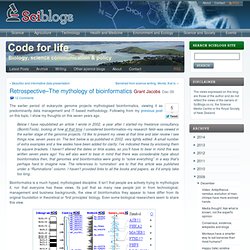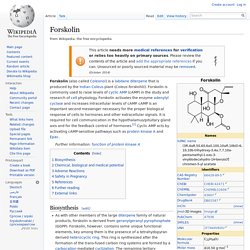

Marine navigation courses: the nautical chart - RYA & ASA sailing schools in Greece. Skip over navigation Projections The nautical chart is a 2-dimensional representation of a 3-dimensional world.

And although this results in various distortions, as long as two requirements are met we can use this image for navigational purposes. The angles between three objects in the chart should be the same as the angles between the real objects which they represent. A straight course should appear as a straight line in the chart. . , a Flemish scholar who studied in 's Hertogenbosch (the Netherlands) and Leuven (now Belgium) and who invented his famous projection in 1569. The Mercator chart was designed for sailors and can be constructed by wrapping a cylinder around the planet so that it touches the equator. ArchiMate. Insurance claim process depicted in ArchiMate.

Archimate enables modelling in different layers. ArchiMate (/ˈɑr.kɪmeɪt/ AR-ki-mayt) is an open and independent enterprise architecture modeling language to support the description, analysis and visualization of architecture within and across business domains[1] in an unambiguous way. ArchiMate is a technical standard from The Open Group and is based on the concepts of the IEEE 1471 standard. It is supported by various tool vendors and consulting firms. ArchiMate is also a registered trademark of The Open Group. ArchiMate distinguishes itself from other languages such as Unified Modeling Language (UML) and Business Process Modeling Notation (BPMN) by its enterprise modelling scope.[3] Overview[edit] ArchiMate offers a common language for describing the construction and operation of business processes, organizational structures, information flows, IT systems, and technical infrastructure.
History[edit] ArchiMate topics[edit] Architecture[edit] W. Edwards Deming. William Edwards Deming (October 14, 1900 – December 20, 1993) was an American engineer, statistician, professor, author, lecturer, and management consultant.

Educated initially as an electrical engineer and later specializing in mathematical physics, he helped develop the sampling techniques still used by the U.S. Department of the Census and the Bureau of Labor Statistics. In his book, The New Economics for Industry, Government, and Education,[1] Deming championed the work of Walter Shewhart, including statistical process control, operational definitions, and what Deming called the "Shewhart Cycle"[2] which had evolved into Plan-Do-Study-Act (PDSA).
This was in response to the growing popularity of PDCA, which Deming viewed as tampering with the meaning of Shewhart's original work.[3] Deming is best known for his work in Japan after WWII, particularly his work with the leaders of Japanese industry. Deming is best known in the United States for his 14 Points (Out of the Crisis, by W. Retrospective—The mythology of bioinformatics. The earlier period of eukaryote genome projects mythologised bioinformatics, viewing it as predominantly data management and IT-based methodology.

Following from my previous post on this topic, I show my thoughts on this seven years ago. Below I have republished an article I wrote in 2002, a year after I started my freelance consultancy (BioinfoTools), looking at how at that time I considered bioinformatics–my research field–was viewed in the earlier stage of the genome projects. I’d like to present my views at that time and later review I see things now, seven years on. The text below is as published in 2002, very lightly edited.
A small number of extra examples and a few asides have been added for clarity; I’ve indicated these by enclosing them by square brackets. Bioinformatics is a much hyped, mythologised discipline. To see past these myths one needs to peer into bioinformatics’ past and view its progress since its beginnings. The first sequence database is surprisingly old. Forskolin. Biosynthesis[edit] As with other members of the large diterpene family of natural products, forskolin is derived from geranylgeranyl pyrophosphate (GGPP).

Forskolin, however, contains some unique functional elements, key among them is the presence of a tetrahydopyran derived heterocyclic ring. This ring is synthesized after the formation of the trans-fused carbon ring systems are formed by a carbocation mediated cyclization. The remaining tertiary carbocation is quenched by a molecule of water. After deprotonation, the remaining hydroxyl group is free to form the heterocyclic ring. Chemical, biological and medical potential[edit] The sometimes successful use of forskolin to reduce intraocular pressure may be due to its unique ability to stimulate adenylate cyclase activity and increase cAMP which regulates and activates critical enzymes required for the cellular energy required to move fluid out of the eye.
[edit] There are limited clinical trials about the adverse effects of forskolin.